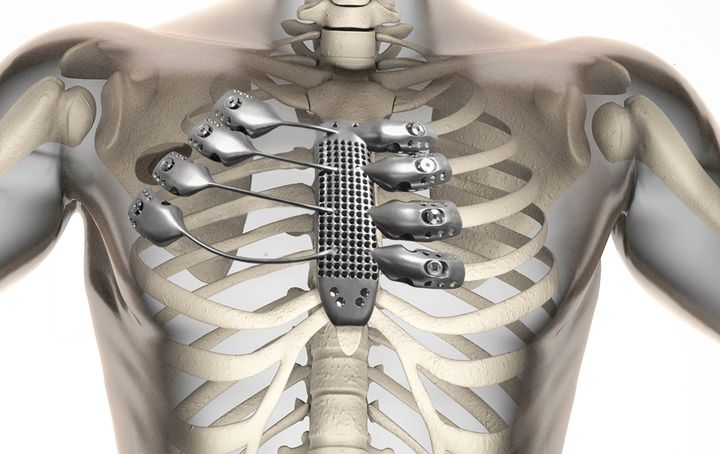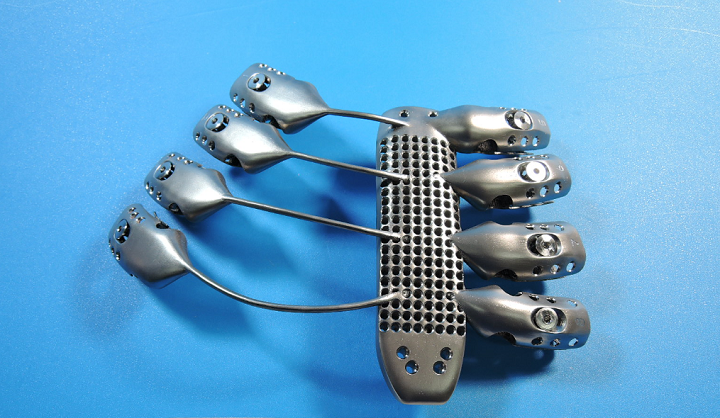
The invention of 3D printing has led to a revolution in manufacturing, with everything from engine parts to robotic prosthetics being fabricated. But perhaps the most exciting application of this technology comes in the form of printing replacement tissues and body parts. In addition to miniature kidneys, livers, cartilage and skin, bioprinters have expanded their repertoire in recent years to include artificial bones as well.
An impressive example of this comes to us from Melbourne, Australia, where a medical company known as Anatomics recently patented the world's first 3D printed titanium sternum and rib implant. Created in conjunction with the Commonwealth Scientific Industrial Research Organization (CSIRO), this implant was given to a 54 year-old patient in Spain who was diagnosed with a rare form of cancer.
Known as a sarcoma, this type of cancer occurs in bone, cartilage, fat, muscle, vascular, or hematopoietic tissues. In this case, the patient had a sarcoma in their chest cavitiy and had to have their sternum and parts of their ribcage removed. This presented numerous surgical challenges, as this area of the chest has complicated geometries that are notoriously difficult to recreate with prosthetics.
The customizable implant can be adjusted to fit into the affected area and then secured in place with screws. Credit: csiro.au
As such, the surgical team - which consisted of Dr. José Aranda, Dr. Marcelo Jimene and Dr. Gonzalo Varela from Salamanca University Hospital - thought that a 3-D printed implant would be the ideal solution. As Aranda stated:
“We thought, maybe we could create a new type of implant that we could fully customise to replicate the intricate structures of the sternum and ribs. We wanted to provide a safer option for our patient, and improve their recovery post-surgery.”
To meet this challenge, the Salamanca University team turned to the Melbourne-based company Anatomics. Using a series of high resolution CT scans, the company was able to create an exact model of the patient's sternum and ribs. They then enlisted the help of the CSIRO's Lab 22 facility, which specializes in the creation of 3-D printed metal objects, to create it.
Using a 3-D printer that uses titanium dust to manufacture products, they were able to print a custom-made metal chest implant. This implant was designed to be adjustable, with pieces that can be positioned to attach over the remaining bone and secured in place with screws. Once the prosthesis was complete, it was couriered to Spain and implanted into the patient's chest.

Alex Kingsbury leads Lab 22's additive manufacturing research at CSIRO. Credit: csiro.au
The surgery was declared a complete success, and twelve days later, the patient was discharged from the hospital and has been recovering well. Ian Macfarlane, the Australian Minister for Industry and Science, characterized the success of the procedure shortly thereafter in a press release:
"This breakthrough is an impressive example of what can be achieved when industry and science come together. This collaboration crossed disciplines and international boundaries, with a clear benefit for both this individual patient and for surgical practice.”
The success of this first-ever procedure is perhaps an indication of what the future holds as well. From customizable implants to custom-made replacement tissues - ranging from organs to skin - the future may very well be made-to-order.
Do you have an idea that could lead to a medical breakthrough, or want to help others make a difference? Then check out these Challenges, or go to the Launch Your Challenge page and get ready to see it come true!
Top Image Credit: csiro.au









